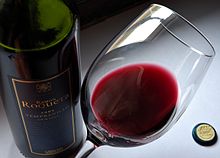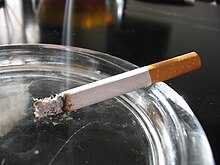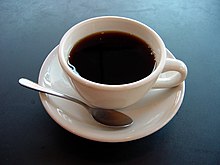Drug

A drug, broadly speaking, is any substance that, when absorbed into the body of a living organism, alters normal bodily function.There is no single, precise definition, as there are different meanings in drug control law, government regulations, medicine, and colloquial usage.
In pharmacology, a drug is “a chemical substance used in the treatment, cure, prevention, or diagnosis of disease or used to otherwise enhance physical or mental well-being.”Drugs may be prescribed for a limited duration, or on a regular basis for chronic disorders.
Recreational drugs are chemical substances that affect the central nervous system, such as opioids or hallucinogens. They may be used for perceived beneficial effects on perception, consciousness, personality, and behavior. Some drugs can cause addiction and/or habituation.
Drugs are usually distinguished from endogenous biochemicals by being introduced from outside the organism.[citation needed] For example, insulin is a hormone that is synthesized in the body; it is called a hormone when it is synthesized by the pancreas inside the body, but if it is introduced into the body from outside, it is called a drug. Many natural substances such as beers, wines, and some mushrooms, blur the line between food and recreational drugs, as when ingested they affect the functioning of both mind and body and some substances normally considered drugs such as DMT (Dimethyltryptamine) are actually produced by the human body in trace amounts.
Etymology
Drug is thought to originate from Old French “drogue”, possibly deriving later into “droge-vate” from Middle Dutch meaning “dry barrels”, referring to medicinal plants preserved in them.
Medication
(esomeprazole magnesium)
A medication or medicine is a drug taken to cure and/or ameliorate any symptoms of an illness or medical condition, or may be used as preventive medicine that has future benefits but does not treat any existing or pre-existing diseases or symptoms.
Dispensing of medication is often regulated by governments into three categories—over-the-counter (OTC) medications, which are available in pharmacies and supermarkets without special restrictions, behind-the-counter (BTC), which are dispensed by a pharmacist without needing a doctor’s prescription, and Prescription only medicines (POM), which must be prescribed by a licensed medical professional, usually a physician.[citation needed]
In the United Kingdom, BTC medicines are called pharmacy medicines which can only be sold in registered pharmacies, by or under the supervision of a pharmacist. These medications are designated by the letter P on the label.[8] The range of medicines available without a prescription varies from country to country.
Medications are typically produced by pharmaceutical companies and are often patented to give the developer exclusive rights to produce them, but they can also be derived from naturally occurring substance in plants called herbal medicine.[citation needed] Those that are not patented (or with expired patents) are called generic drugs since they can be produced by other companies without restrictions or licenses from the patent holder.
Spiritual and religious use
The spiritual and religious use of drugs has been occurring since the dawn of our species. Drugs that are considered to have spiritual or religious use are called entheogens. Some religions are based completely on the use of certain drugs. Entheogens are mostly hallucinogens, being either psychedelics or deliriants, but some are also stimulants and sedatives.
Self Improvement
Nootropics, also commonly referred to as “smart drugs”, are drugs that are claimed to improve human cognitive abilities. Nootropics are used to improve memory, concentration, thought, mood, learning, and many other things. Some nootropics are now beginning to be used to treat certain diseases such as attention-deficit hyperactivity disorder, Parkinson’s disease, and Alzheimer’s disease. They are also commonly used to regain brain function lost during aging. Similarly, Drugs such as steroids improve human physical capabilities and are sometimes used (legally or not) for this purpose, often by professional athletes.
Recreational drug use


drug

Recreational drugs use is the use of psychoactive substances to have fun, for the experience, or to enhance an already positive experience. National laws prohibit the use of many different recreational drugs and medicinal drugs that have the potential for recreational use are heavily regulated. Many other recreational drugs on the other hand are legal, widely culturally accepted, and at the most have an age restriction on using and/or purchasing them. These include alcohol, tobacco, betel nut, and caffeine products in the west, and in other localised areas of the world drugs such as Khat are common. Because of it’s the legal status of many drugs, recreational drug use is controversial; with many governments not recognising spiritual or other perceived uses for drugs and classing them under illegal recreational use.
Administering drugs
Drugs, both medicinal and recreational, can be administered in a number of ways. Many drugs can be administered in a variety of ways rather than just one.
- Bolus
- Inhaled, (breathed into the lungs), as an aerosol or dry powder. (This includes smoking a substance)
- Injected as a solution, suspension or emulsion either: intramuscular, intravenous, intraperitoneal, intraosseous.
- Insufflation, or snorted into the nose.
- Orally, as a liquid or solid, that is absorbed through the intestines.
- Rectally as a suppository, that is absorbed by the rectum or colon.
- Sublingually, diffusing into the blood through tissues under the tongue.
- Topically, usually as a cream or ointment. A drug administered in this manner may be given to act locally or systemically.
- Vaginally as a suppository, primarily to treat vaginal infections.
Legal definition of drugs

Some governments define the term drug by law. In the United States, the Federal Food, Drug, and Cosmetic Act definition of “drug” includes “articles intended for use in the diagnosis, cure, mitigation, treatment, or prevention of disease in man or other animals” and “articles (other than food) intended to affect the structure or any function of the body of man or other animals.”Consistent with that definition, the U.S. separately defines narcotic drugs and controlled substances, which may include non-drugs, and explicitly excludes tobacco, caffeine and alcoholic beverages. Drug



